Although created almost a century ago, the art and writing of the Roaring 20’s still captivates us today. Writer F. Scott Fitzgerald left behind some of the most iconic stories of this fascinating time period. The radical social change he wrote about was also evident in the art that adorned his dust jackets, as the artists who designed them had an uncanny ability to capture the zeitgeist of the era. Art imitated life, and Fitzgerald and his publishers knew how to captivate the attention of a younger generation, the ones who were behind all this change, like never before.
Fitzgerald’s first three dust jackets were designed by artist William E. Hill. Hill had made a name for himself illustrating for Puck magazine and the Sunday New York Tribune. His ability to depict everyday people in natural settings was well-known, so when Scribner’s editor Maxwell Perkins needed to choose an artist for Fitzgerald’s upcoming publications, he looked to this established artist.
This Side of Paradise (1920) depicts an elegantly dressed young man and woman, portraying all the decadence and extravagance of the era. The cover art for Flappers and Philosophers (1920) features an illustration for perhaps the best story in the collection, “Bernice Bobs Her Hair.” The choice of both title and art for this book did well to make it a best-seller: the word “flappers” and the art showing a young girl cropping her hair in the latest style are at once attractive and provocative, easily capturing the attention of any young person perusing their local bookstore.
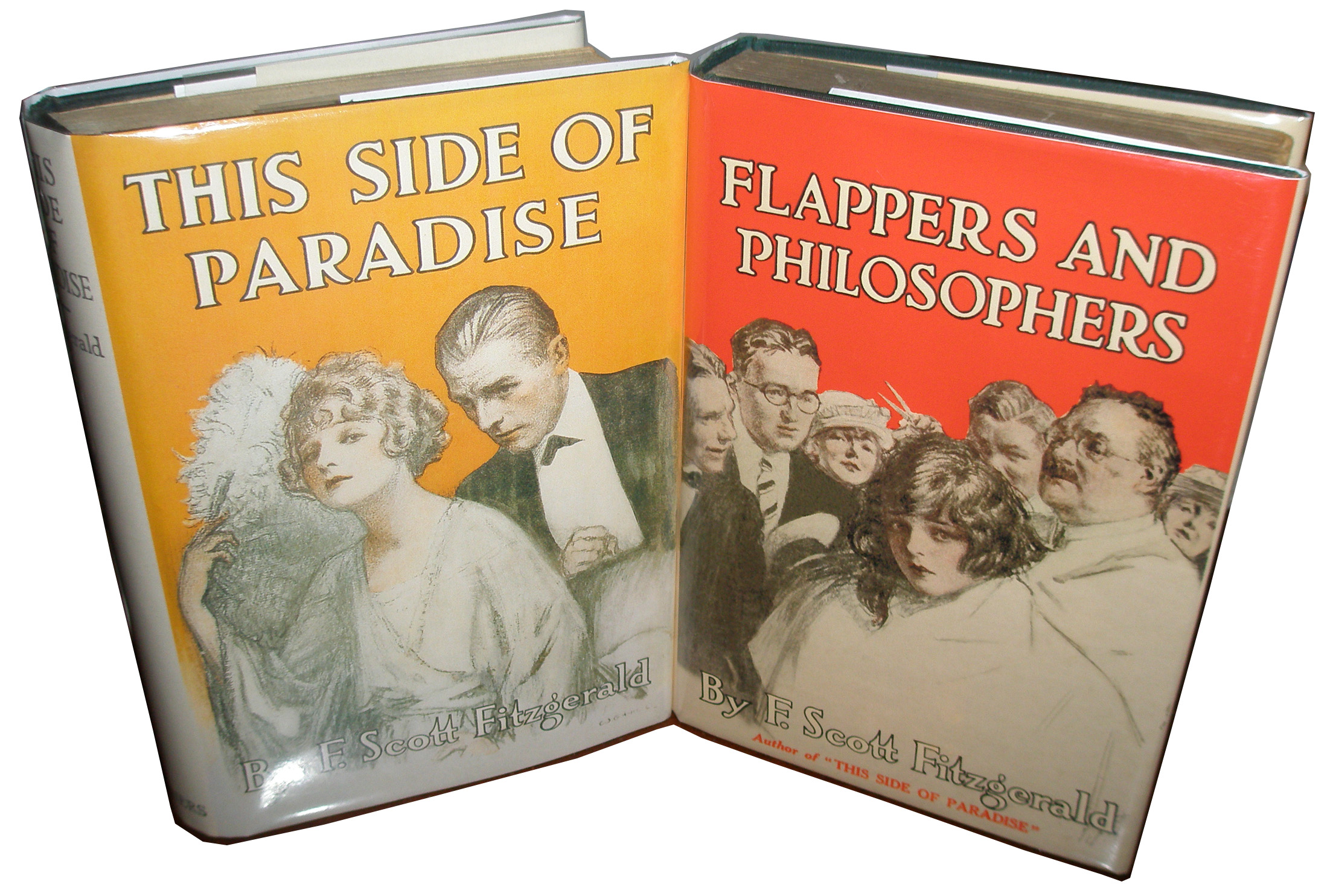
First Editions in facsimile dust jackets, B&B Rare Books
Hill paid special attention to facial features, and thus, had a knack for conveying the complexities and subtle nuances of expression and emotion. This original drawing by Hill, Wedding Night Jitters (1915), shows a moody young couple facing away from each other, the negative space between them as the focal point of the drawing. The characters are intense yet disengaged, creating a visible tension in the drawing.
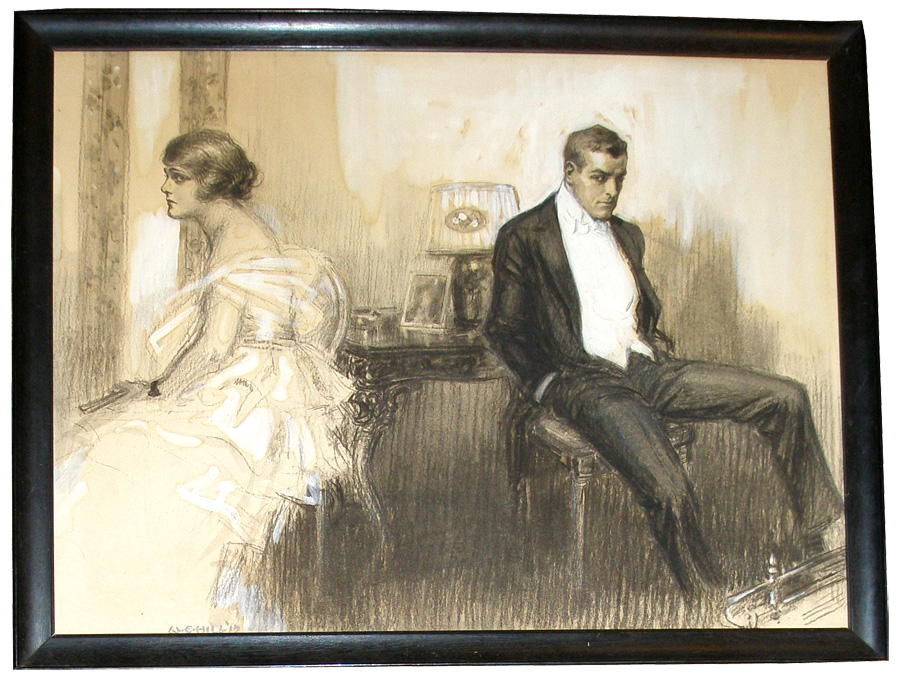
Original Hill drawing, 1915, B&B Rare Books
Even though it was the lifelike quality to his work that earned Hill the job, Scribner’s choose another illustrator for Fitzgerald’s subsequent books, when Fitzgerald complained that the couples Hill drew looked more and more like himself and his wife Zelda. In a 1922 letter to Perkins about The Beautiful and Damned (1922) cover, Fitzgerald commented that “the girl is excellent of course” but thought the man looked like “a debauched version of me.”
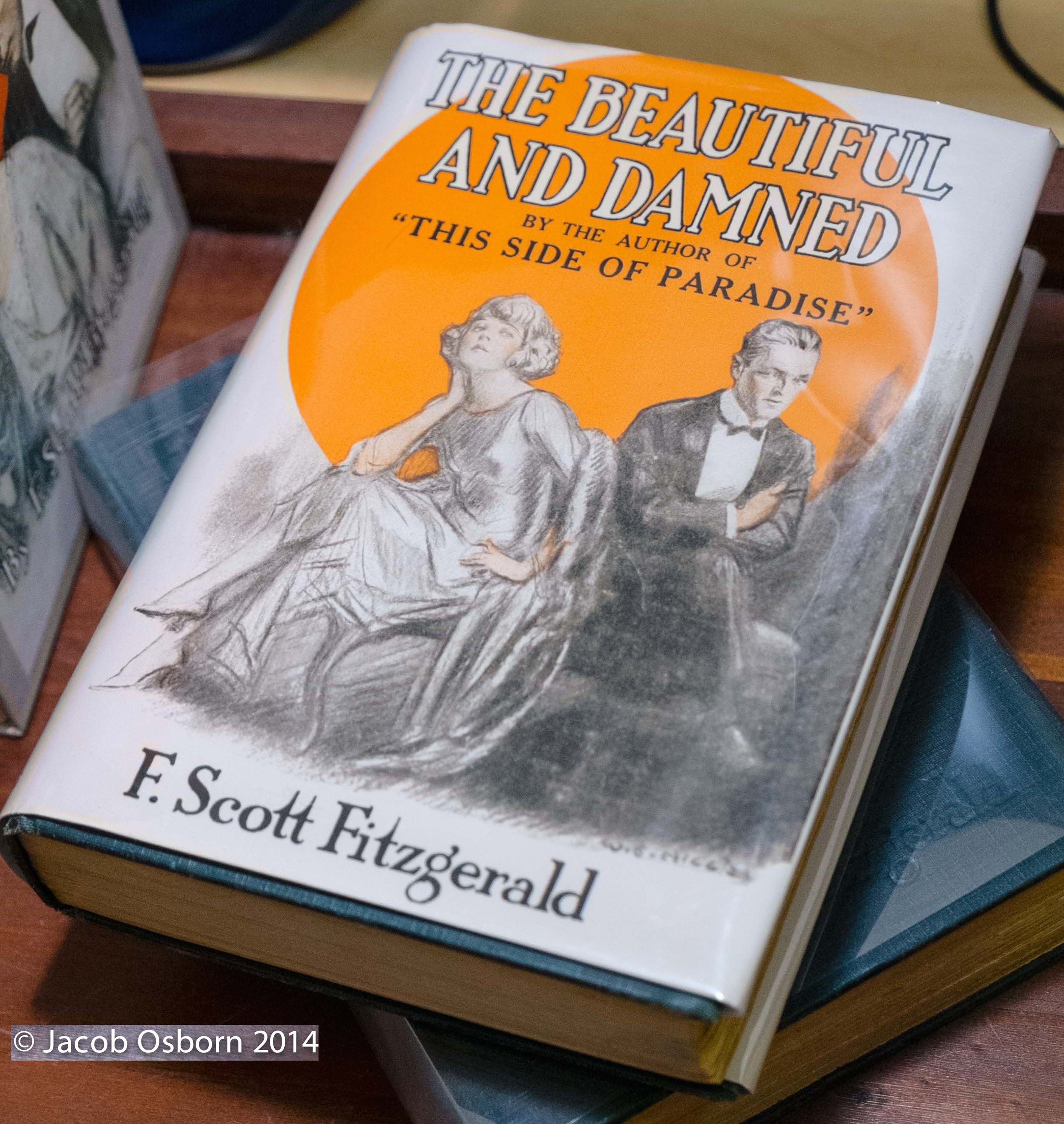
First Edition in facsimile jacket, from the collection of Jacob Osborn
Hill was replaced by illustrator John Held, Jr. Held’s work, which adorned the covers of many of the most popular magazines of the era, is much more cartoony than lifelike, but the characters he created were also exemplary of the Roaring 20's. Held’s first cover for Fitzgerald was for The Beautiful and Damned’s companion book of short stories, Tales of the Jazz Age (1922). Young couples, the women with bobbed hair and shorter hemlines, dance to jazz music. The Vegetable (1923), shows a similar theme, expanding upon the work Held created for Life and The New Yorker that earned him his fame.
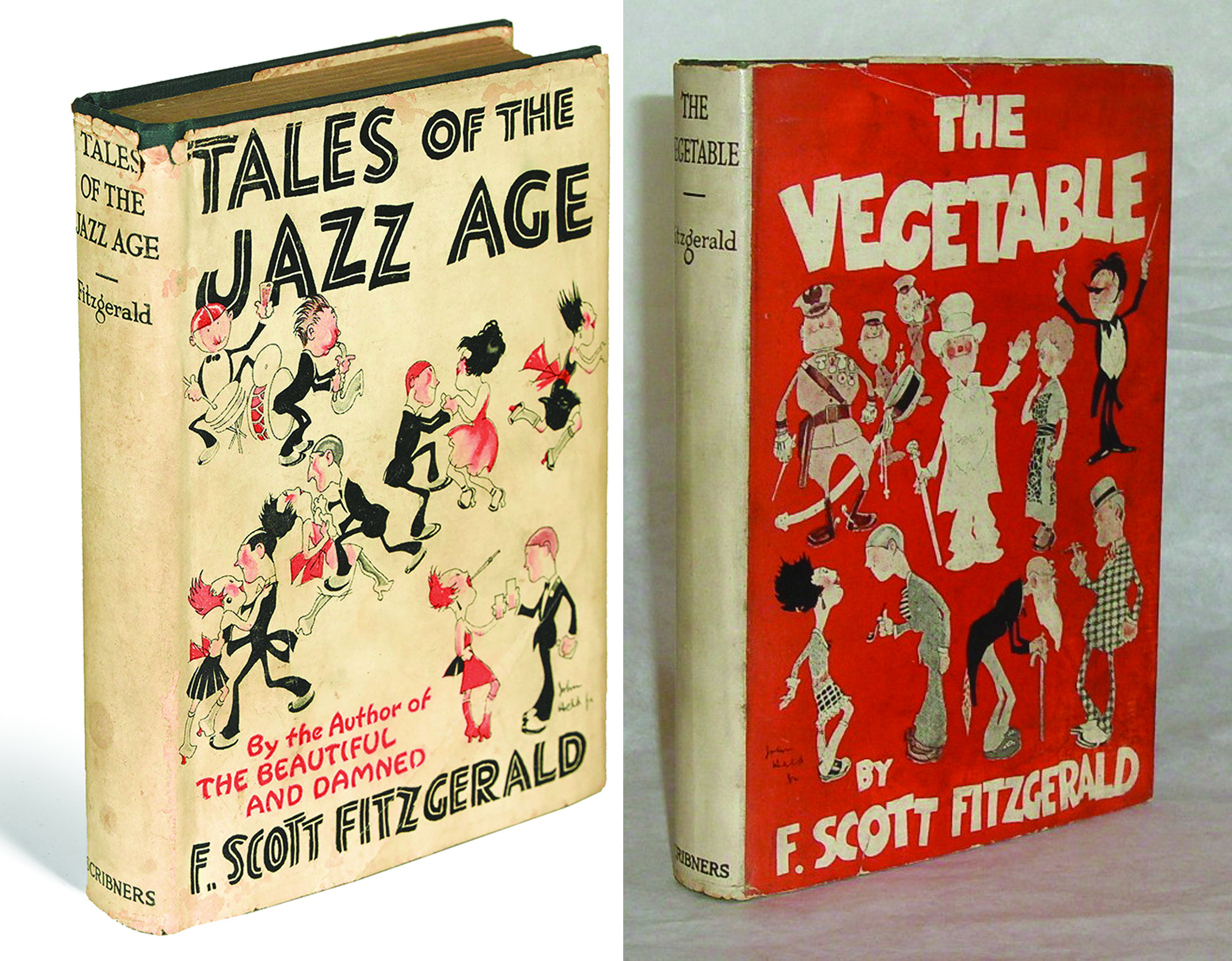
First Editions in original jackets, 'Tales' courtesy of Swann Auction Galleries
An attention to costume was important for Held’s archetypal flapper. Consider the original Held drawing below– "Her costume was topped off by a pair of long white sailor's pants." Interestingly, the shift from realism and focus on facial expression of Hill’s work to the cleaner lines and abstraction of Held’s art mirrors the shift to a preference for the simplified and more geometric lines of Art Deco that would exemplify the time period.
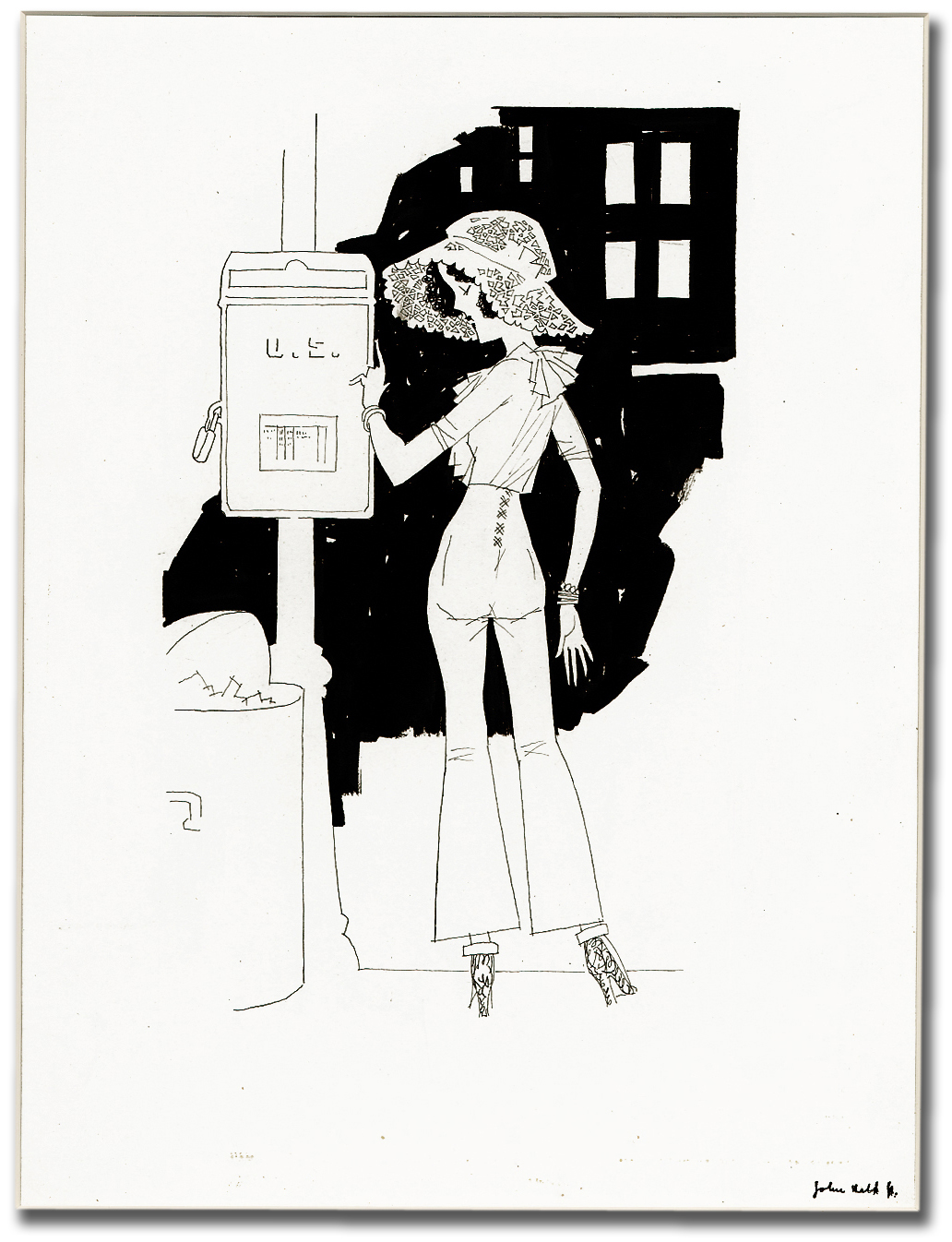 Original Held drawing, 1931, courtesy of Between the Covers
Original Held drawing, 1931, courtesy of Between the Covers
Rather than rooting their work in older styles of illustration, these two artists benefitted from keeping with the times, by paying rapt attention to the world that was changing rapidly around them. Using new techniques and styles, and portraying the real world as it was, captured the excitement and attention of young people in a changing world, a dynamic society that continues to inspire the art and writing of today.







 Original Held drawing, 1931, courtesy of
Original Held drawing, 1931, courtesy of